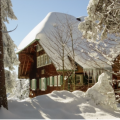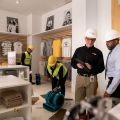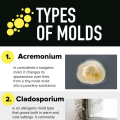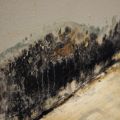11/24/2020
Tree Mold May Be The Cause Of Your Christmas Tree Allergy

12/29/2020
A Christmas tree can bring more with it into your home than pure holiday joy. Any time you bring a live Christmas tree inside, there's the chance that it's carrying tree mold that can trigger symptoms in those who suffer from allergies, asthma, and other respiratory issues. How do you know whether you have a Christmas tree allergy or mold is to blame? We've got all the information you need to diagnose and prevent what's otherwise known as "Christmas tree syndrome".
Christmas Tree Allergy
Real Christmas trees have the potential to trigger allergies, but it may not be the tree itself that's doing it. Symptoms of Christmas tree syndrome include, but aren't limited to:
- Sneezing
- Runny nose and/or nasal congestion
- Eye, nose and throat irritation
- Wheezing/difficulty breathing
- Headaches
- Nosebleeds
Before you chuck your live tree for an artificial model because you think you have a Christmas tree allergy, consider the fact that the same symptoms occur when you're exposed to mold.
Christmas Tree Mold
Both artificial and real trees can cause allergies due to pollen and other contaminants that cling to them. If artificial trees are not stored properly, dust can become a real problem. Real trees, on the other hand, are especially at risk for bringing allergens into the home. From the tree farm to the sales lot, real Christmas trees spend the majority of their lives outdoors. When brought home for the holidays, they can bring pollen, dust and other contaminants with them. They also can bring tree mold.
Since trees are often harvested weeks before the Christmas season, real trees often stand in moist holding areas – hydration helps keep the tree looking fresh. This continued exposure to moisture can cause tree mold to develop. Mold spores can spread easily as you carry the tree into your house and move branches around during decorating. This exposure puts you and your family at risk for the health issues typically associated with mold. Researchers from St. Vincent's Medical Center in Connecticut have discovered that a fresh Christmas tree can raise the mold level in a room by as much as five times their normal levels. These increased levels can cause allergy symptoms and trigger asthma. The longer you have a fresh tree in your home, the higher your risk for developing Christmas tree allergy symptoms.
Since trees are often harvested weeks before the Christmas season, real trees often stand in moist holding areas – hydration helps keep the tree looking fresh. This continued exposure to moisture can cause tree mold to develop. Mold spores can spread easily as you carry the tree into your house and move branches around during decorating. This exposure puts you and your family at risk for the health issues typically associated with mold. Researchers from St. Vincent's Medical Center in Connecticut have discovered that a fresh Christmas tree can raise the mold level in a room by as much as five times their normal levels. These increased levels can cause allergy symptoms and trigger asthma. The longer you have a fresh tree in your home, the higher your risk for developing Christmas tree allergy symptoms.
Prevent Christmas Tree Syndrome
To reduce the presence of Christmas tree mold and other allergens in your home, thoroughly shake your tree before bringing it inside if your local tree farm doesn’t provide this service. Handle your tree as little as possible and consider waiting to purchase one until later in the season. Keep a real tree up and decorated for no more than a week to limit allergen exposure. The other option is to choose a well-maintained artificial tree, or buy a live, potted tree that you can plant after the season is over to relive your Christmas memories for years to come.
Other Mold Issues
If allergy symptoms don't clear up after a Christmas tree has been removed from your home, there may be other mold issues lurking. Contact the mold remediation professionals at ServiceMaster by LoveJoy if you notice signs of mold or continue to experience symptoms that may be related to mold exposure.
Atlanta, GA's Mold Remediation Experts
ServiceMaster by LoveJoy has the expertise and equipment to inspect your home thoroughly and customize a plan that will safely treat and eliminate a mold problem of any size at any time of year. Our IICRC-Certified teams offer complete mold remediation services 24 hours a day, 7 days a week, 365 days a year to stop mold where it starts and keep it from interrupting your holiday – or any day.
Our Mold Remediation Services Include:
Our Mold Remediation Services Include:
- Black mold removal and cleanup
- Mold Inspection
- Mold Removal
- Disposal and repair of affected areas
- Structural Drying
- Water Extraction
- Mold prevention
- Leak repairs
Areas We Serve:
- Atlanta
- Decatur
- Sandy Springs
- Stockbridge
- Conyers
- McDonough
- Marietta
- Stone Mountain
- Roswell
- Covington
- Social Circle
- DeKalb County
- Fulton County
Call ServiceMaster by Lovejoy at 770-983-6665 for your free inspection.
Other articles and publications:
Learn the tips to limit mold growth in the winter months in Atlanta. Call ServiceMaster by LoveJoy today at 770-992-157 for free on-site mold inspection
Every homeowner dreads the appearance of leaks. In this article, ServiceMaster by Lovejoy discusses the role of slow water damage from roof leaks in causing mold build-up.
10/19/2020
If you suspect you may have mold, call ServiceMaster by LoveJoy today. We’ll help you understand the necessary protocol in safely ridding your home or business of mold contamination. 678-293-0297
8/20/2020
Mold can grow on your home's siding, so it is proactive to prevent it. Learn more in this article by ServiceMaster by LoveJoy.
4/26/2021
Learn three of the top causes of winter water damage and how to reduce your risk from the experts at ServiceMaster by LoveJoy.
12/29/2020
To avoid mold infestation in your home or business, here are some preventive tips to keep in mind.
2/18/2021
Articles and publications of other companies:
When ServiceMaster Restore of Cartersville, GA professionals engage in the restoration of your commercial and residential property, you can be sure you’re getting the best the industry has to offer.
11/26/2020
When ServiceMaster of Cobb of East Ridge, TN professionals engage in the restoration of your commercial and residential property, you can be sure you’re getting the best the industry has to offer.
11/26/2020
Time will not cooperate with you after a water disaster. The longer you’re going to wait for the restoration to be done, the greater the chances your items become unrecoverable.
9/15/2020
Do you know your mold facts? The mold remediation professionals at ServiceMaster of Savannah have compiled 21 facts about mold everyone needs to know.
10/29/2020
What is the difference between mold and mildew? ServiceMaster of Cobb will discuss them in this article.
2/22/2021
Learn about the dangers of removing black mold on your own. For 24/7 Georgia mold remediation service, contact ServiceMaster of Cobb at (678) 293-0297.
5/24/2021









